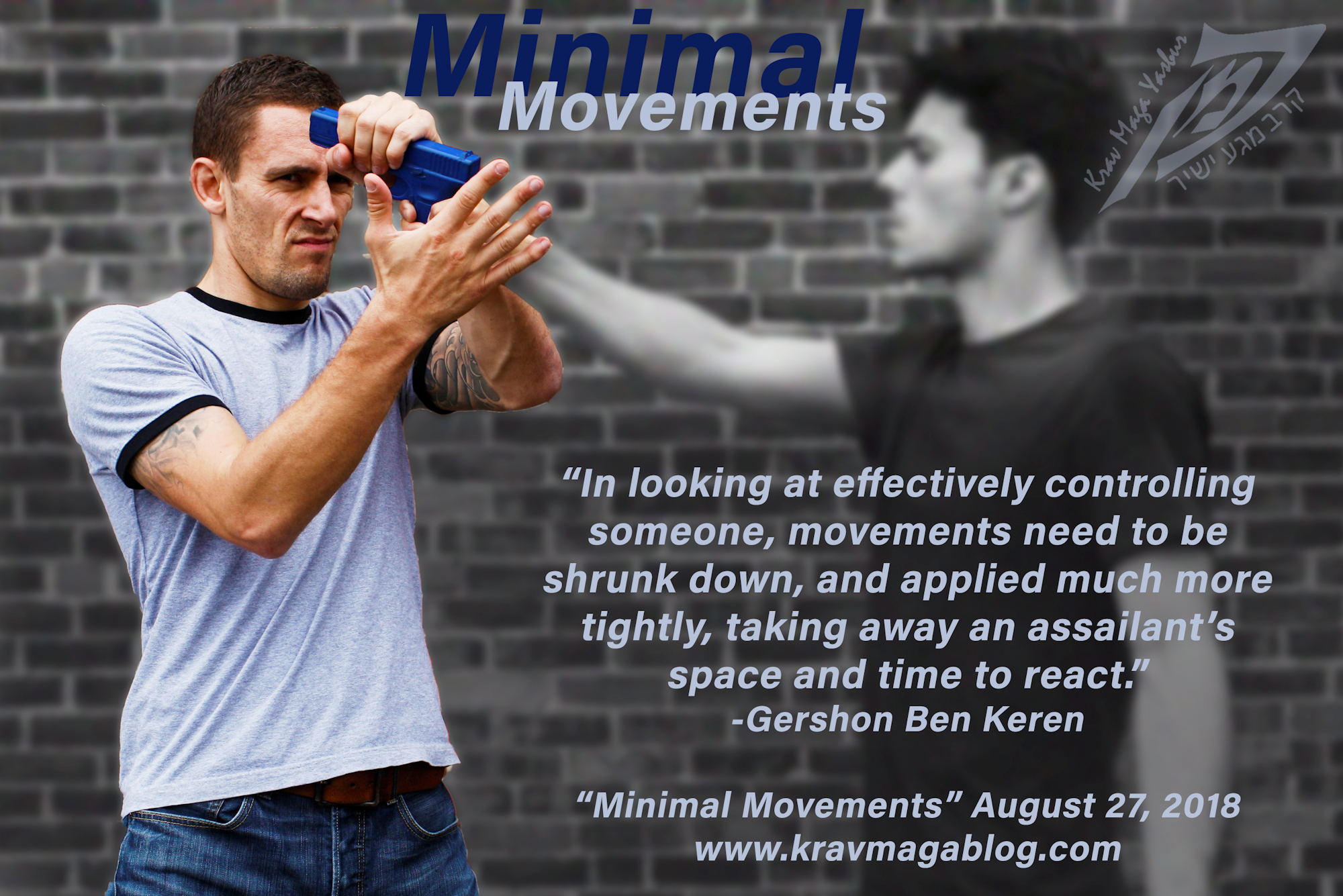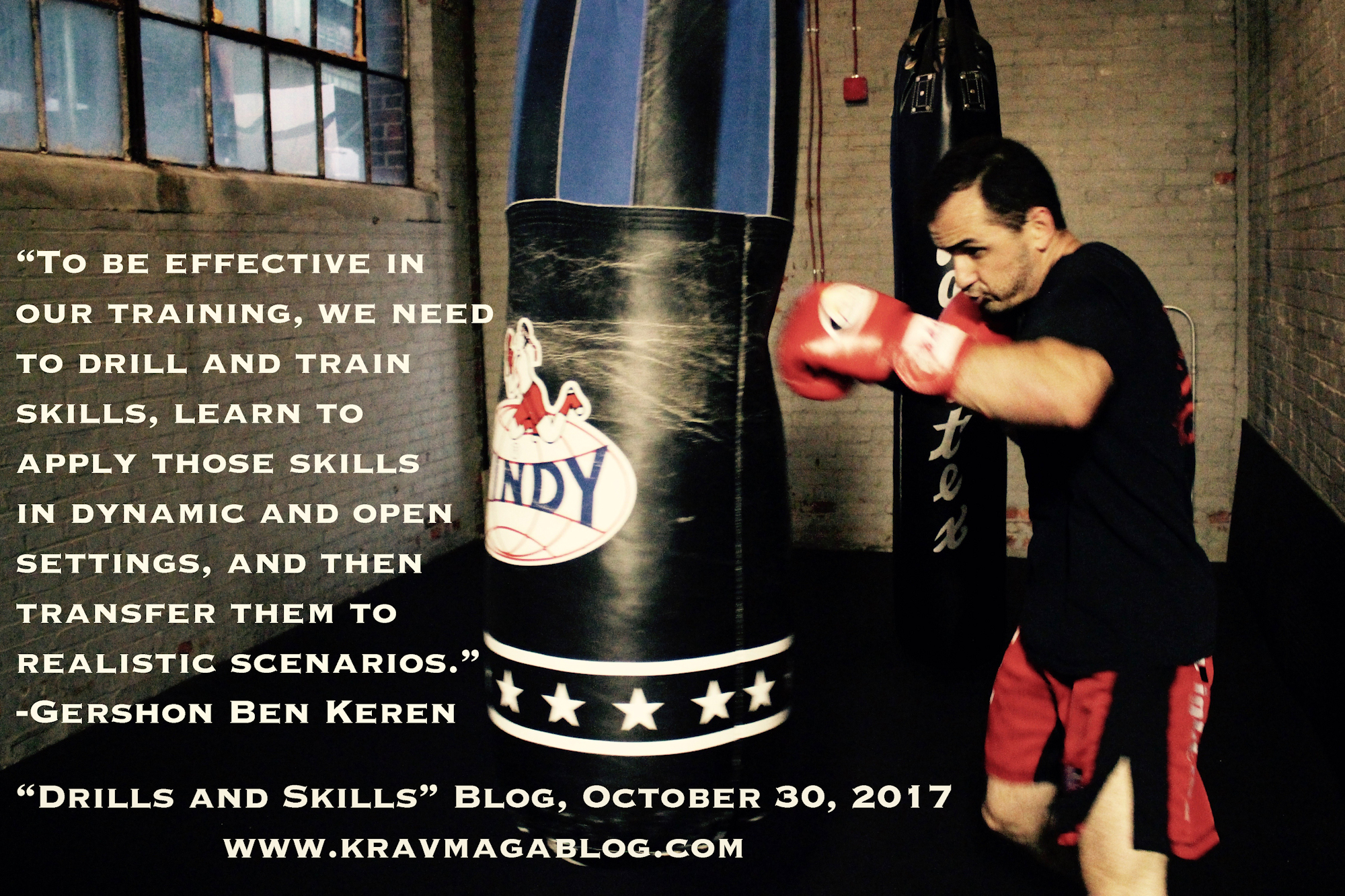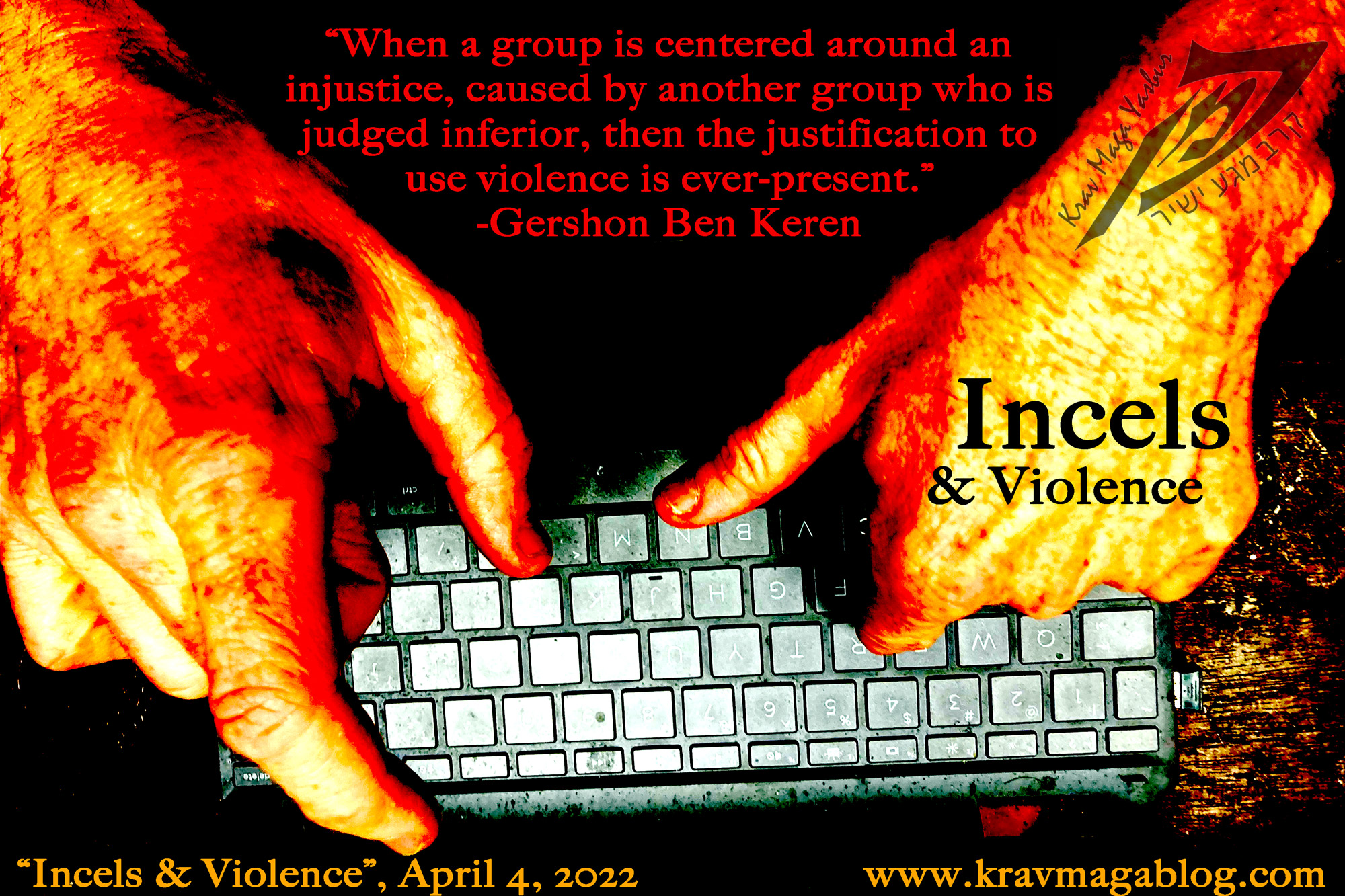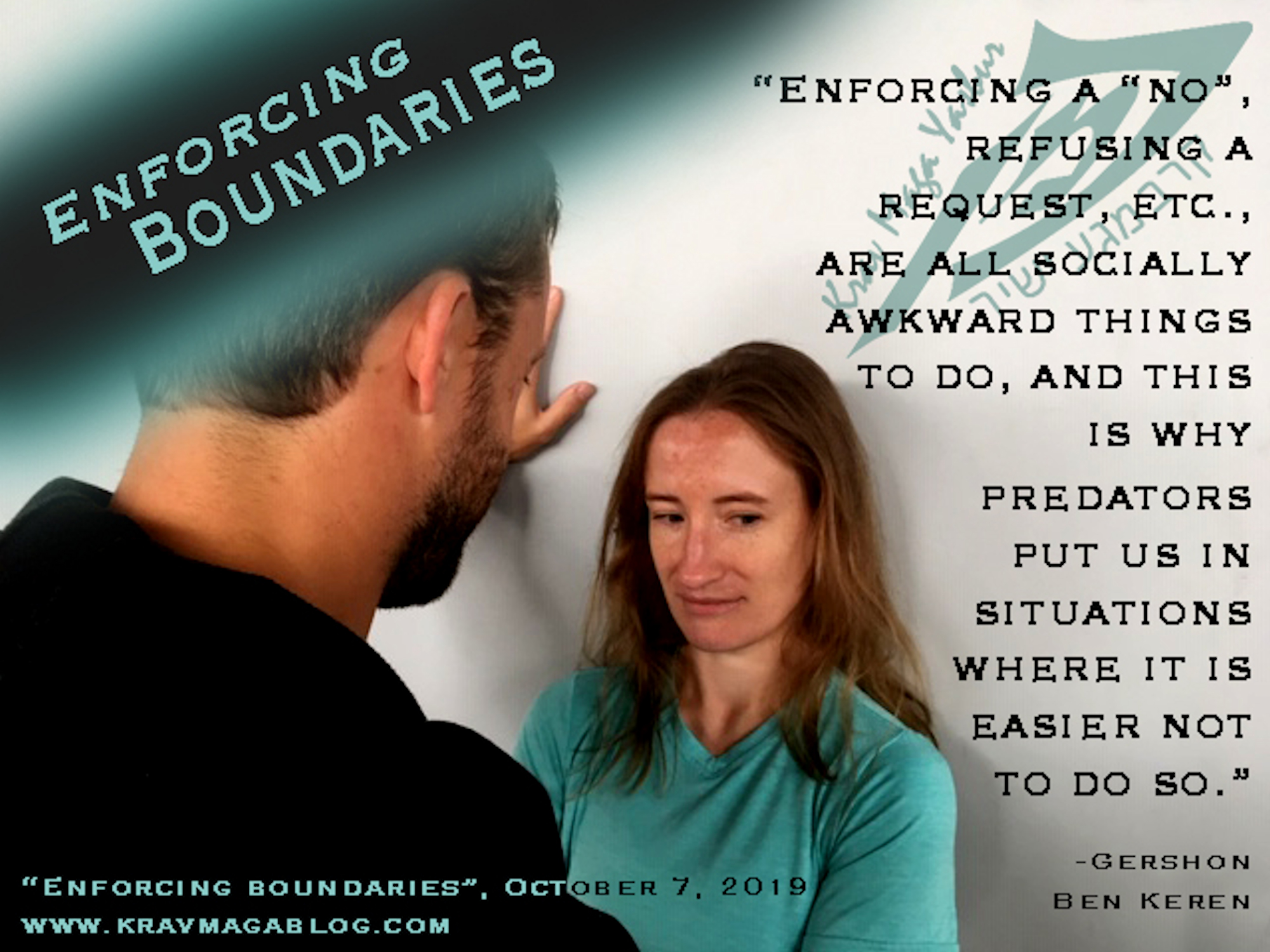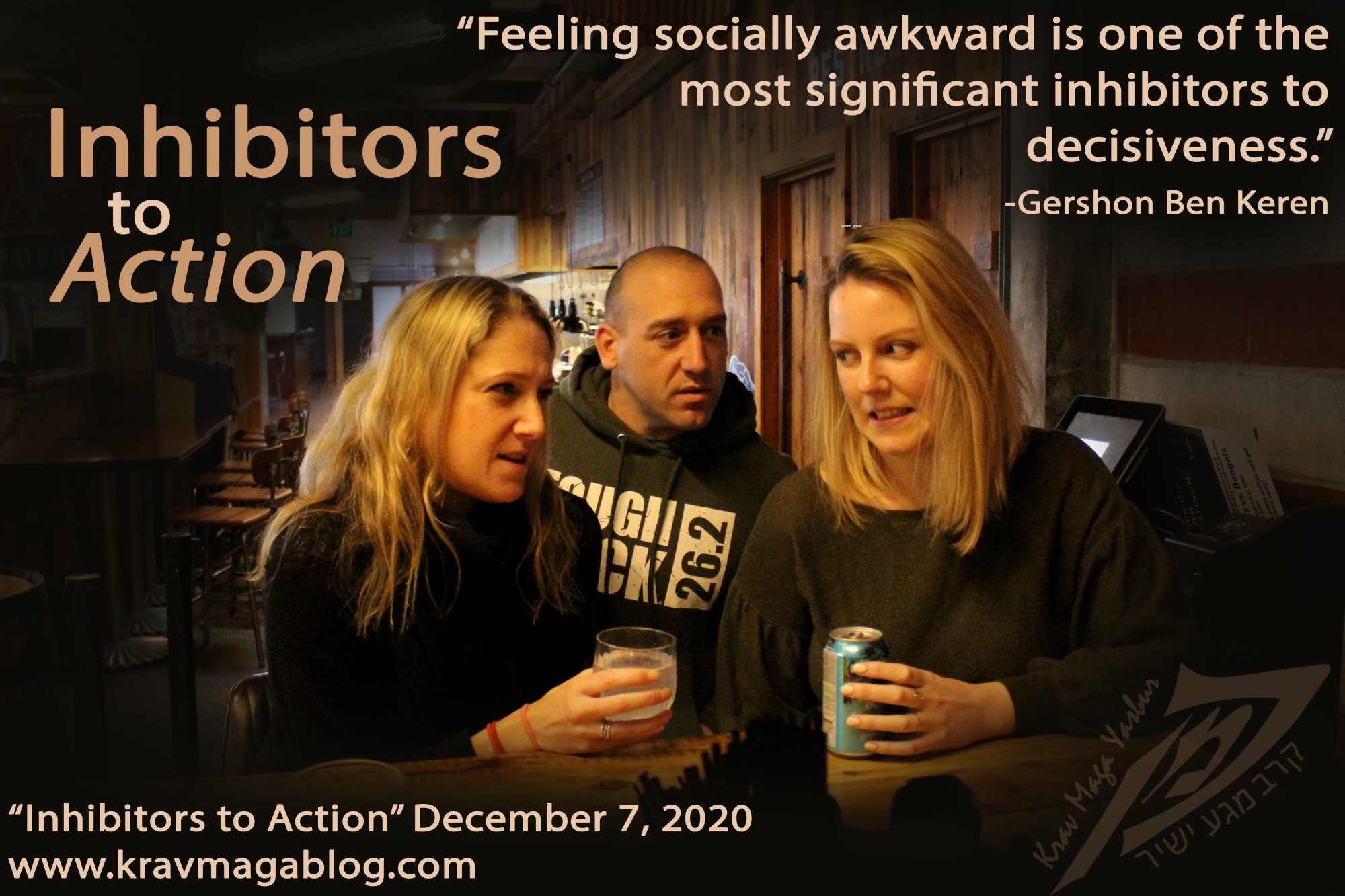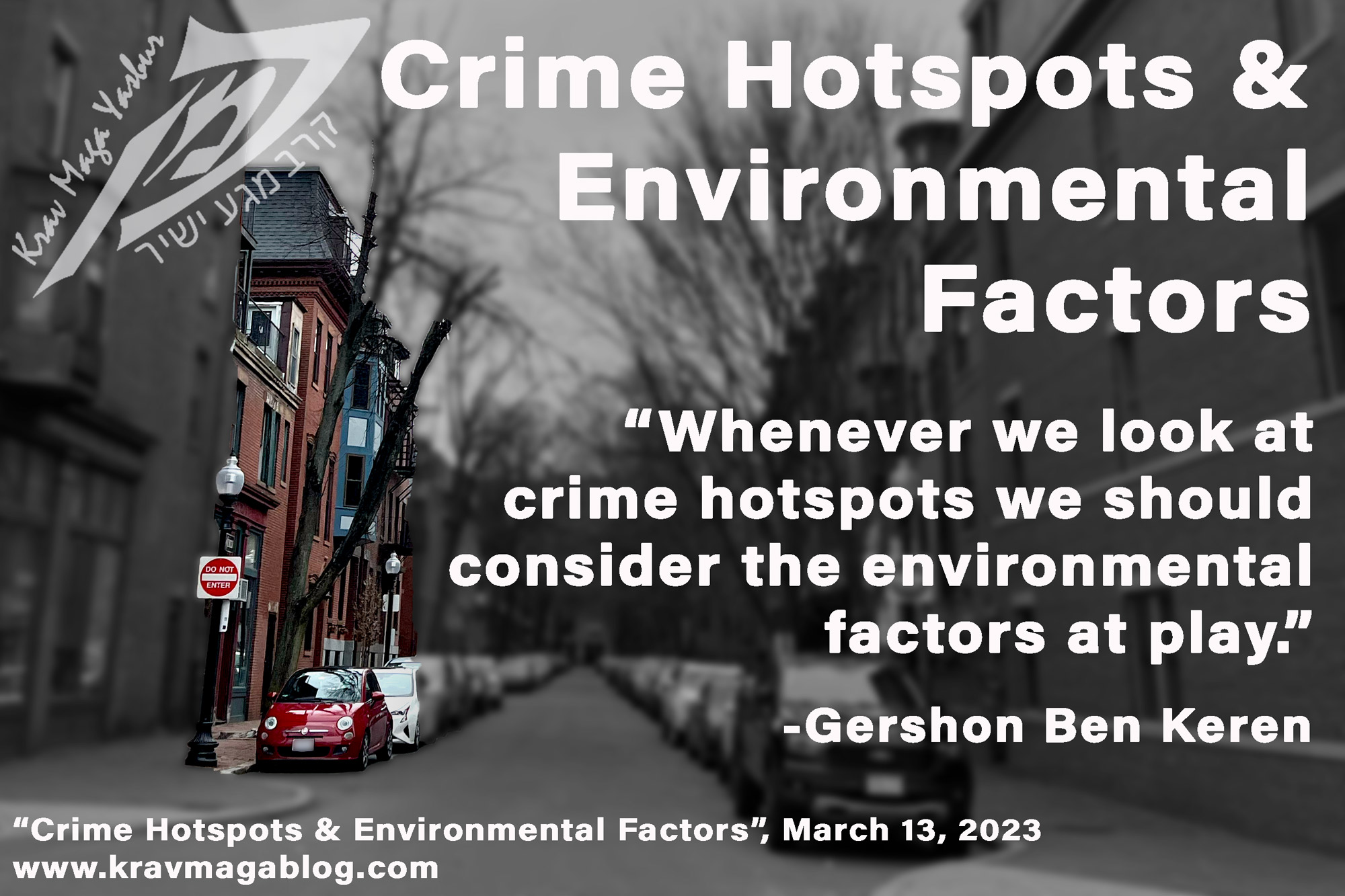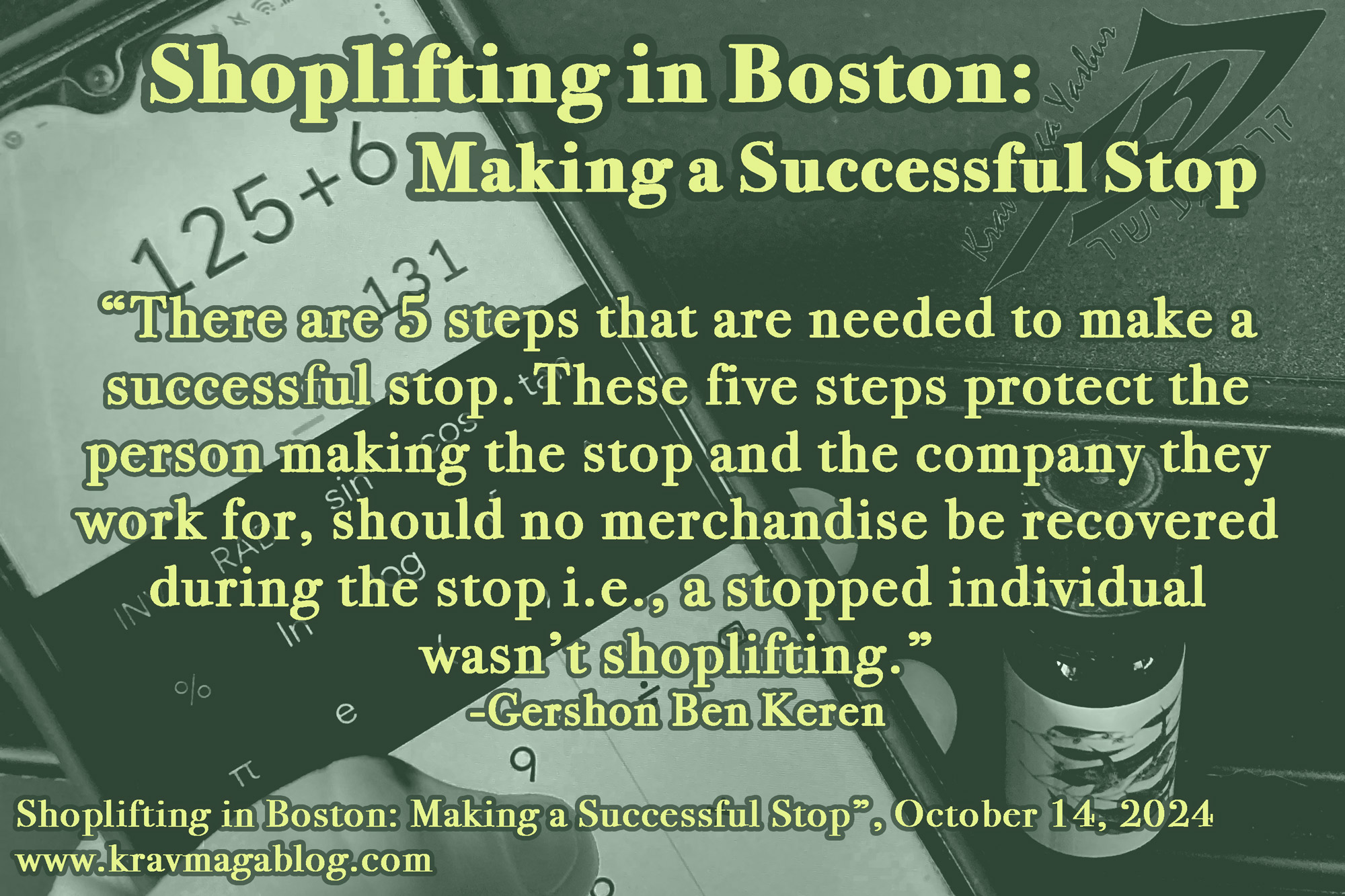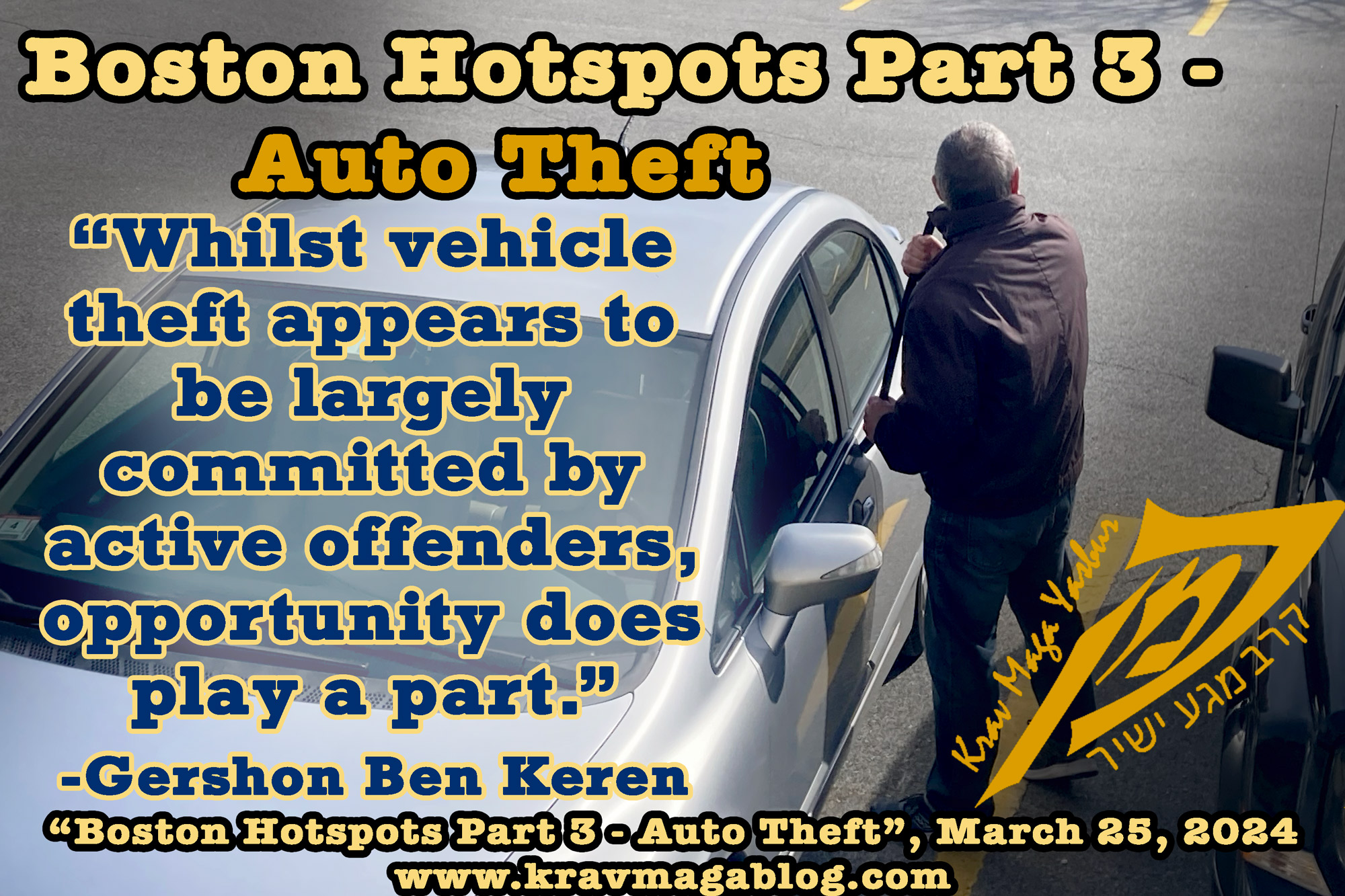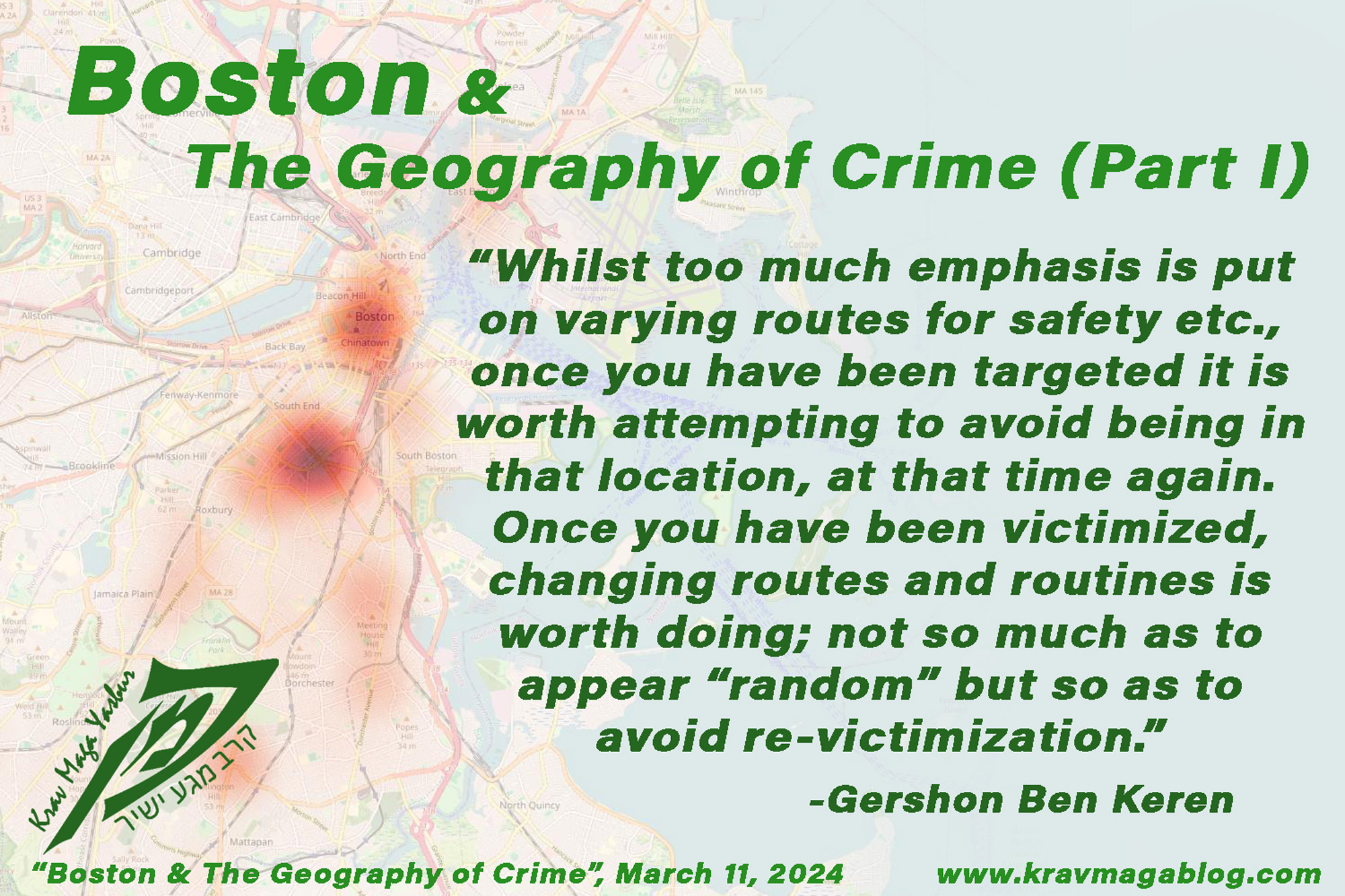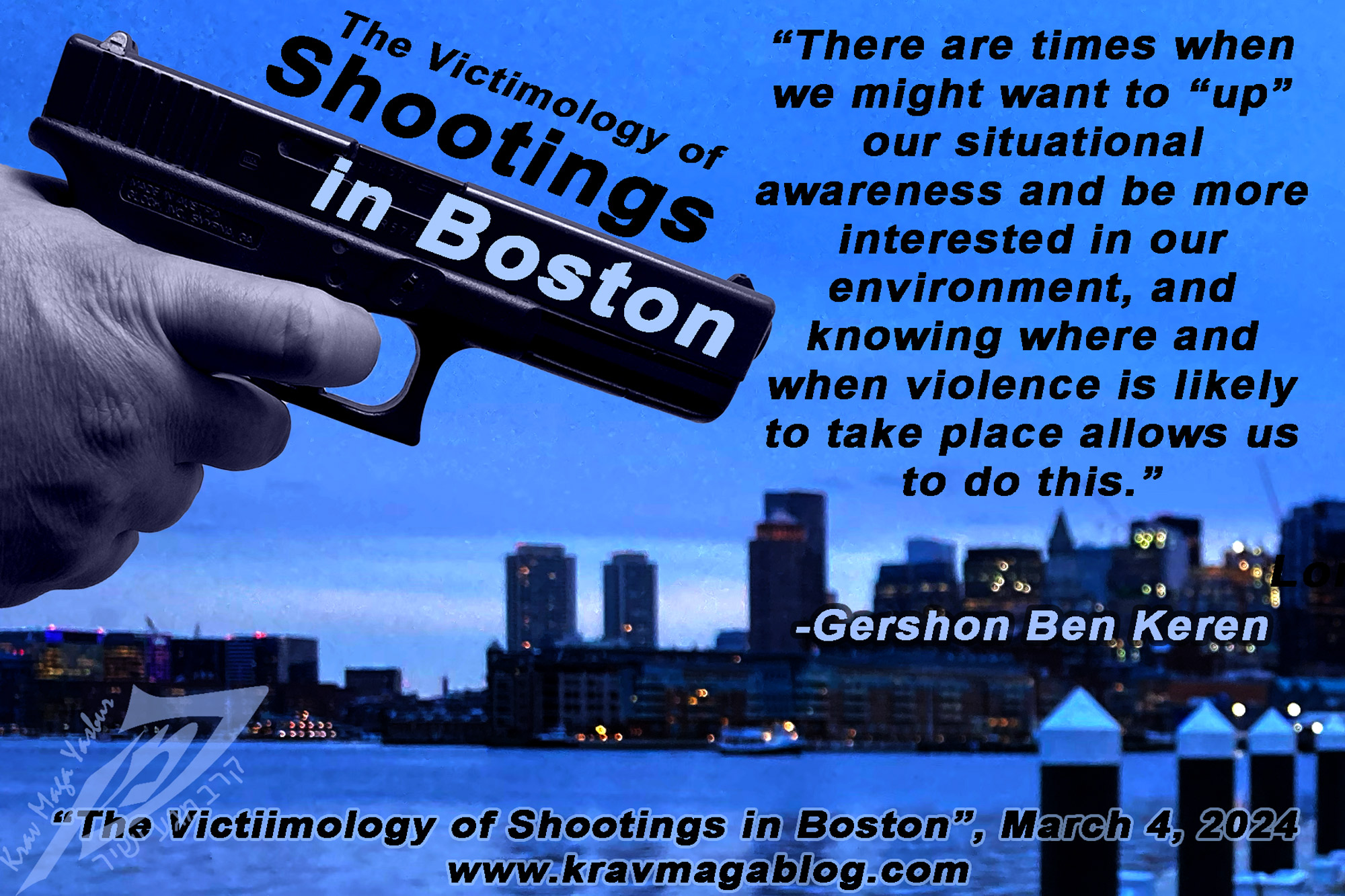Crime Hotspots & Environmental Factors, is an article written by Gershon Ben Keren, a 5th Degree Black Belt in Krav Maga, who teaches Krav Maga in Boston, MA. He has also authored three Amazon best-Selling Books on Krav Maga.
Four years ago, I wrote an article on crime hotspots, that contained the line, “Crime isn’t evenly spread across a geography, it is concentrated in “hot-spots”, even down to the house level e.g., those working in law enforcement will tell you there are homes they are repeatedly called to etc.” (You can access the article by clicking here). The Boston Globe ran the following headline, last week in its Sunday edition (Sunday 12th March): “A tiny street in Dorchester is a magnet for street violence. Police say one house is the source of so much trouble.” The article states that in 2022, the police were called to this particular street 132 times, with offenses including shootings, drug activity etc. Something worth bearing in mind is that of these 132 calls made to this street (Helen Street in Dorchester), only 17 were serious enough to warrant an incident report e.g., it could be that a call is made concerning a verbal dispute between two partners, that is considered a “verbal domestic”, something which in many jurisdictions doesn’t require a report to be written. This dispute may later develop into a physical, domestic assault, with a second call being made, that now warrants a report to be written up etc. Something also to consider, is that it might be one person or a few people making 911 calls e.g., a “curtain twitcher” who is continually watching the street and overly sensitive/paranoid to any type of disturbance, calling the police at any minor infraction etc. This is not to say that this street doesn’t have issues but rather it is worth looking at all of the “statistics” in order to get a better/fuller picture of what is going on, and it may well be that the majority of the calls were for low-level offenses, such as excessive noise, verbal disputes etc., rather than for shootings, weapons violations, and aggravated assaults etc. It may also be that this street rather than being the hub/center of a hotspot, is located somewhere within a larger hotspot, that may have other streets and places with higher crime concentrations (something that we will look at in a later article).
Another important thing to note, is that at the end of this short street is a tire shop, and there are a number of incident reports that relate to offenses concerning vehicles/automobiles etc., so when considering activity on this street, the presence of this establishment should also be considered. Again, I am not trying to argue that this street doesn’t have an issue with crime but rather that we should try to understand all of the things that may influence offending in a particular location e.g., what is the low-level anti-social activity that warrants the attention of law-enforcement, and what is the sporadic but regular, high-level offending that occurs in this location. It is important for us to establish such a picture, because otherwise we can form an opinion that such “hotspots” are locations which feature daily drive-by shootings, murders, robberies etc., and even in the most “active” hotspots this is rarely the case. In this article I want to look at some of the environmental/geographical aspects that may contribute to this short street seeing the high level of anti-social, and sometimes criminal, activity that it does.
There has long been an association between middle/high schools and higher rates of neighborhood crime. However, many studies, have looked primarily at the school, and not considered socio-economic factors, concerning the neighborhoods in which schools were located. In 2018, Willits et al., conducted a study, which considered such factors, and found that neighborhoods that had middle and high schools in them, regardless of any other factors, had higher levels of violent, property and narcotics crimes, than locales without i.e., schools raise crime rates. The street in question is less than 100 feet from an elementary school. Most juvenile crime constitutes low-level offending, that doesn’t result in an incident report. This could potentially mean that some of the “disturbances” that occur on this street, are not committed by hardened criminals, but by kids after school, who are roaming the neighborhood, bored and looking for fun/excitement. Also, located within 100 feet of the street, is the Perkins Community Center, which has a “Teen Center”, along with a gym, pool, and other leisure facilities. Such buildings often become a hub for young people to hang out at, and bring in large numbers of teenagers and young people. Such places may become “Crime Generators” i.e., they don’t necessarily attract potential offenders to them, but because of the large number of people that visit them for leisure activities, they bring a relatively high percentage of would-be offenders into the vicinity. People with a history of offending don’t come into the locale looking to/with the intention of offending, but find themselves in an area, due to other reasons, and take advantage of opportunities to offend e.g., someone with a history of breaking into cars, comes to the center with the intention of working out at the gym, but whilst in the neighborhood spots an opportunity they can’t resist.
Another factor which can raise the crime rate in a location is accessibility. The street in question is off a main routeway, Talbot Ave, which is connected to Blue Hill Avenue. When I first started looking at crime hotspots in Boston – with a focus on violent offending – two things became immediately apparent. There is something exciting about putting the crime data, of a city you are not that familiar with, into geospatial mapping software, and seeing the results i.e., you have no expectations or preconceived ideas about certain districts and neighborhoods, which is not the case if you are engaging in the same exercise in a city you know well, such as where the “bad” neighborhoods are. Not surprisingly, there were some notable and significant hotspots close to the city center (one at the intersection of Massachusetts Avenue and Melena Cass Boulevard, which I later learnt was a major hub for illicit drugs; the hub of which shifted in a largely predictable fashion throughout the day), but then there were a series of hotspots, that popped up along one major routeway into and out of the city: Blue Hill Avenue. Anyone living in Boston would probably not be surprised by these findings e.g., there was a 2001 crime-drama film called Blue Hill Avenue about crime in that area set in the 1980’s, so the road’s association with violent offending is both long and well-known to residents of the city. Most of these hotspots were not located directly on Blue Hill Avenue, but on nearby streets that were off it – just far enough away to lack “eyes on the street”. The street in question has four bus stops and a rail-transit stop, within 100 yards. This makes it an extremely accessible location e.g., if the said-mentioned house on it, is a location where drugs are being dealt from, it is easily able to serve an extended audience who are located outside of its neighborhood. This means it may attract individuals who use public transportation to get around as well as those who drive, including city workers who want somewhere accessible but far enough away from their places of work, and where they live, to acquire recreational drugs etc.
There is no doubt that this street statistically constitutes a hotspot, both in the number of calls it receives and the number of incidents it generates. However, it would be overly simple, to conclude that the reason for this is solely down to the people who live there; the same people in another location may not generate or be subject to the same level of anti-social activity that they experience in this location e.g., without being so close to a school, a community center (as well as a large park/recreational area), and being so accessible (roads/transit routes) etc. This is why whenever we look at crime hotspots we should consider the environmental factors at play. In next weeks article I will do a fuller statistical analysis of Hel
0 COMMENTS